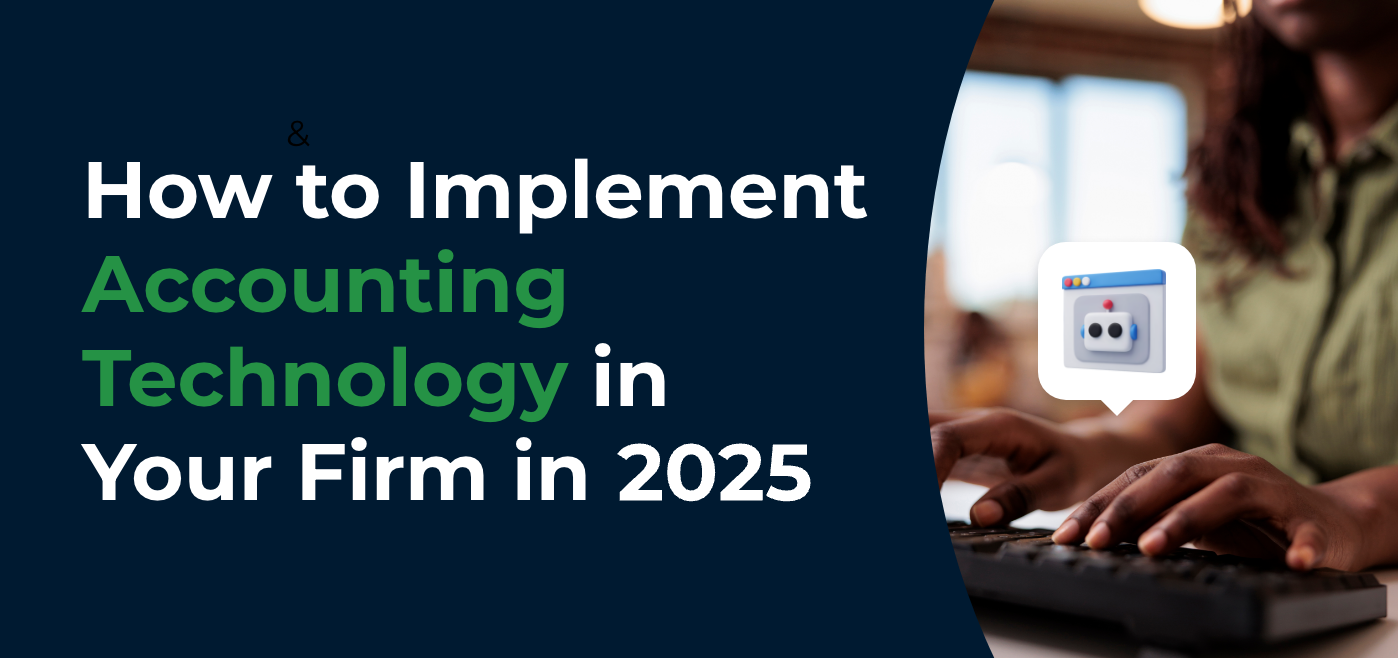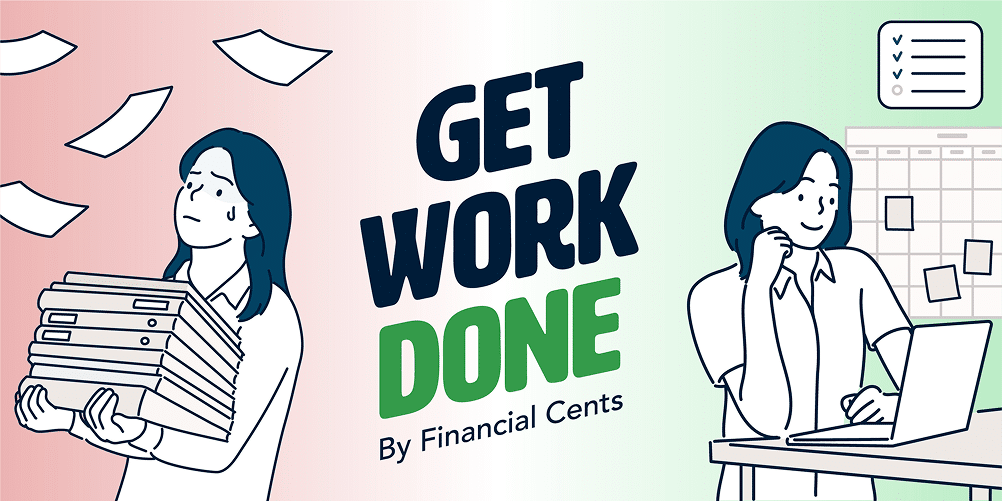Picture a world without computers, where stacks of physical spreadsheets, paper ledgers, journals, and columnar pads are your only tools for performing financial transactions. It would be a nightmare, right?
This was the reality for accountants and bookkeepers a few decades ago. They had to sift through piles of paper documents to crunch numbers.
Fast forward to the present, technology has transformed the accounting industry. Automation and artificial intelligence are no longer future trends but present realities that have made practicing accounting more efficient, accurate, and streamlined.
This means as an accountant, being good with numbers is not enough. You must be tech-savvy to remain relevant and keep pace with the industry.
What’s more, clients now demand speed, accuracy, and quality in their work. In short, 78% of business owners say they would consider switching to an accountant proficient with the latest accounting technology, and the reason isn’t far-fetched. Clients are seeking accountants who leverage tools and software to enhance their overall experience, ensuring that they get value for their time and money.
So, if the idea of scaling your firm with the help of such tools resonates with you (we bet it does), this article will provide you with practical tips on how to successfully implement accounting technology in your practice.
What is Accounting Technology?
Accounting technology refers to a broad range of tools, software, and systems used to streamline and automate accounting processes.
These tools leverage technological advancements, such as artificial intelligence (AI) and automation to enhance efficiency, accuracy, collaboration, and security in accounting tasks.
Also, technology taking over non-billable, lower-value tasks frees up valuable time, allowing you to focus on higher-value tasks that are more profitable.
In a QuickBooks survey, 48% of accountants expect to invest in and adopt AI and automation tools over the next 12 months. This shows a widespread readiness among professionals to ditch their pens, spreadsheets, and calculators and embrace technology to grow their firms.
Ready to follow in their footsteps? Here’s how.
How to Successfully Implement Accounting Technology in Your Firm in 2025
Reading about how accounting technology saves time and enhances efficiency is good, but using it in your accounting practice is even better.
Here are concrete ways to incorporate accounting technology into your firm’s operations to improve accuracy and streamline your processes.
1. Take an Audit of Your Current Technology Infrastructure
With so many accounting tools and software available online, choosing the right ones for your firm may be a tough nut to crack.
However, a good starting point would be to assess your current tech stack and how you use it. This will help you identify outdated or inefficient tools needing replacement with more advanced accounting technology.
Conducting a thorough audit of your current technology infrastructure helps you identify areas for improvement, address challenges, and align your technology solutions with your firm’s specific needs.
This will lay the foundation for successfully integrating accounting technology and help drive efficiency, productivity, and growth in your firm.
Here’s how to conduct an audit:
- Take Inventory: Create a list of the software, hardware, and systems currently in use including productivity tools, communication platforms, and any other technology relevant to your operations.
- Evaluate Efficiency: Assess the efficiency and effectiveness of each tool. Consider factors such as ease of use, functionality, integration capabilities, and user satisfaction. Identify any outdated or underutilized tools that may need replacement.
- Identify Bottlenecks: Map out areas where technology could improve your accounting firm’s workflows. Identify manual processes or routine tasks that could benefit from automation.
- Consider Scalability: Evaluate whether your current technology infrastructure can support your firm’s growth. Assess if the systems can handle increasing data or users without compromising performance or security.
- Assess Security Measures: Review the security measures in place to protect sensitive client data and confidential information. Ensure you implement proper security protocols, access controls, and data encryption to mitigate cybersecurity risks.
- Seek User Feedback: Gather adequate feedback from your team members about the strengths and weaknesses of the current technology infrastructure. Their insights can provide valuable perspectives on areas that need improvement or opportunities for enhancement. You can also reach out to your existing clients to get their input on your current system and areas for improvement.
2. Set Clear Technological Goals
Jumping on the accounting tech bandwagon because everyone else isn’t a strategic approach. You need to set clear technological goals to guide you in selecting the right software for your firm.
Here’s how you can do it:
- Identify Your Pain Points: Determine the specific areas in your accounting processes where you are experiencing difficulties or inefficiencies. For example, if you struggle with manual data entry, you can set a goal to automate data entry and improve accuracy.
- Define Desired Outcomes: What do you want to achieve by streamlining your firm’s operations? Reduce errors? Save time? Improve client collaboration?
- Set SMART Goals: Make sure your technological goals are Specific, Measurable, Achievable, Relevant, and Time-bound. For example, your goal could be to reduce manual data entry errors by 50% within the next six months.
- Prioritize Your Goals: Determine which goals are the most important and focus on achieving them.
- Consider Your Team: Align your goals with your team’s capabilities and adaptation. Don’t aim for moonshot improvements right away. Instead, start with achievable objectives that build confidence and encourage tech adoption among your staff.
- Measure and Monitor: Technology isn’t a set-and-forget-it process. It requires constant monitoring to ensure you’re on the right track. Establish clear metrics to track your progress. Are you meeting your objectives? Are improvements needed?
3. Develop a Clear Understanding of Emerging Technologies in Accounting
AI won’t replace accountants, but it certainly will change roles within the profession.
So, it’s essential to have a deep knowledge of emerging accounting technologies. This way, you can adapt, enhance client experience, deliver quality work, and take up more strategic roles.
Micheal Higgins, CEO of Planergy echoes this same thought:
“Automation and other data-driven technologies are poised to free accountants, not constrain them. Organizations that understand the potential and importance of these technologies — and invest in the tools and training required to help their accountants take full advantage — will be ahead of the curve.”
Here are some accounting technologies to look out for in 2025:
- Cloud-based accounting software: This allows you to access your financial data anytime, anywhere. It makes sharing files, assigning tasks, collaboration, and getting real-time updates a breeze. Financial Cents is an excellent example of a cloud-based software for practice management.
- Artificial Intelligence (AI) and Automation: Harnessing the power of these technologies is key to scaling your firm. They can automate repetitive tasks, streamline workflows, improve accuracy, and provide real-time insights. Explore this review of top ai in accounting software.
- Blockchain technology: Picture a secure, transparent ledger distributed across a network of computers. That’s blockchain technology. It ensures accountants can perform secure, reliable, and transparent transactions while reducing the risk of fraud.
- Robotic Process Automation (RPA): This technology can automate manual, boring tasks, freeing up precious time for accountants to do more meaningful work.
These are just some examples of emerging technologies set to take on a more prominent role in the accounting industry in 2025.
We covered more in this article on accounting technology trends to expect in 2025.
4. Selecting the Right Accounting Software
What’s worse than not using technology? Using the wrong software to handle your accounting processes. They may not have the necessary features to manage your firm’s needs, leading to inefficiency, decreased productivity, and increased costs.
To avoid such problems, research and select the right accounting software that aligns with your firm’s needs, ensuring optimal functionality and efficiency.
Gabrielle Fontaine, PB, ASBC, Bookkeeping Direct corroborates this point:
Every accounting and bookkeeping firm is unique. There is no one-size-fits-all solution. Therefore, creating systems and processes that serve your firm and the unique client base that you serve puts you in a far better position to evaluate workflow automation software for the right fit for your firm. Otherwise, you can waste a ton of time and money jumping from app to app without getting the efficiency and effectiveness you’re after."
To choose the right software for your firm, start by narrowing down your options based on the specific goals you identified earlier.
Then consider factors such as cloud-based vs. on-premises options, the complexity of your accounting processes, and integration capabilities with other software.
Next, look for features that address your firm’s needs, such as automated data entry, customizable reporting, and a client portal.
Additionally, consider the software’s ease of use. A user-friendly interface will reduce training time and ensure a smoother transition for your team.
Recommended Resource
A Comprehensive Guide for Building Your Accounting Firm’s Tech Stack.
5. Automate Repetitive Tasks
In our State of Accounting Workflow Automation survey, 58.3% of accounting professionals said spending time on manual admin work was the biggest workflow issue they faced.
The solution? Using accounting workflow software like Financial Cents to automate repetitive tasks brings immediate benefits such as time savings, reduced human errors, and increased efficiency for your firm.
Also, it allows your team to focus on higher-level strategic activities that generate revenue.
Jason Staats, CPA shares a similar view:
Firms leaning into automation are moving up the value chain faster than those who are not. It’s never been easier to be busy, but this can be a trap. A culture of continuous improvement ensures the team is engaged in meaningful work.”"
6. Training and Change Management
Introducing new accounting technology to your firm is only half the battle. The other half? Getting your staff fully onboard.
Technology is only as good as the people who use it. So, providing hands-on training and unwavering support for your team will quickly help them adapt and maximize its benefits.
Here are some practical tips to hasten staff tech adoption:
- Assess Training Needs: Start by assessing the training needs of your staff. Identify skill gaps and specific areas where training is necessary. This will help you tailor the training plan to address their needs effectively.
- Create a Training Program: Develop a structured training program that’s easily accessible to your staff such as user manuals, online courses, video tutorials, or one-on-one coaching sessions.
- Provide Role-Specific Training: Customize the training program according to different roles within your firm. Focus on the specific features, functionalities, and tasks relevant to each team member. This targeted approach ensures staff members receive training directly applicable to their job roles.
- Hands-on Practice: Offer ample opportunities for staff to practice using the new technology. This can include interactive exercises, simulations, or real-life scenarios. Hands-on practice helps build proficiency and confidence when using the software.
- Communicate the Benefits: Communicate the benefits of the new technology to your staff. Explain how it will streamline processes, save time, reduce errors, and make their work easier. Also, highlight the positive impact it will have on work-life balance. Doing this helps to overcome any internal resistance.
- Ongoing Support: Establish an ongoing support system to address questions or challenges that may arise during the implementation process. This can include dedicated support channels, regular check-ins, and a team knowledgeable about the software and can assist when needed.
7. Security Considerations
Many accounting firm owners want to use technology, yet only a handful have implemented it. While several reasons are responsible for their reluctance, security is a major stumbling block.
In a digital era where data breaches, malware, and cyberattacks are serious concerns, it is crucial to take data security seriously when implementing accounting technology for your company.
Protecting your client and firm’s sensitive information must be a priority to avoid any incident that could lead to losing client information and damaging your firm’s reputation.
Here are some important security tips to keep in mind when integrating technology for your firm:
- Implement Strong Access Controls: Ensure access to client information is restricted to authorized individuals only. Implement strong passwords, access controls, and multi-factor authentication, to prevent unauthorized access.
- Choose Secure Software: Choose accounting software with built-in security features such as data encryption, strong user authentication, role-based access controls, and regular software updates to address any security vulnerabilities. You can opt for secure data storage options such as cloud-based solutions that offer encryption to protect against data loss.
- Regularly Update Software and Systems: Keep your accounting software up to date with the latest security updates. This helps protect against known vulnerabilities that cybercriminals may exploit.
- Train Staff on Security Awareness: Provide regular security awareness training to your staff. Educate them about common cyber threats like phishing, social engineering, and malware attacks. Train them to recognize and report suspicious activities to mitigate potential risks.
- Use Secure File Sharing and Communication: When sharing sensitive client information, use secure file-sharing methods such as encrypted emails or secure client portals. Avoid using unsecured channels like regular email or public file-sharing services.
- Regularly Backup Data: Implement a robust strategy to ensure your client information is regularly backed up to secure locations. Regular backups help in case of data loss due to cyberattacks, hardware failures, or natural disasters.
- Stay Updated on Security: Stay informed about the latest security threats and best practices in cybersecurity. Regularly review industry publications, attend webinars, and participate in professional networks to stay updated with evolving cybersecurity trends.
In one of our Grow & Scale Webinar, Andrew Lassise provides insight into Data Security in an AI World
8. Data Migration Strategies
Implementing accounting technology for your firm is no stroll in the park. It requires a lot of planning, and data migration is a crucial aspect of the process.
As such, you need to develop effective data migration strategies to ensure a smooth transition and avoid losing important data.
Here are some effective migration tips:
- Plan the Migration Process: Create a detailed plan for the migration process, including timelines, resources, and potential risks.
- Backup and Security: Before migration, create a secure data backup. This ensures you can revert to the original state without losing crucial information in case of any issues during migration.
- Gradual Migration: It’s not a bad idea to move all your data at once. However, consider a phased migration approach. Start with a small amount of data to test the process and identify potential issues before migrating the entire data.
- Testing: Conduct extensive testing to validate the accuracy of migrated data. This includes reconciling financial statements to ensure that the new system produces results consistent with the old system.
- Parallel Run: Run the old and new systems in parallel for a certain period. This allows you to compare results and identify any discrepancies. It’s a safety net before fully committing to the new technology.
- User Training: Train your accounting team on the new software to ensure they are comfortable with the interface and understand any changes in accounting workflows.
- Rollback Plan: Have a rollback plan in case the migration encounters significant issues. This plan should outline the steps to revert to the old system and data.
- Post-Migration Support: Provide ongoing support to your staff after migration. This includes resources, documentation, and guidance to help them navigate the new software effectively.
Recommended Reading
7 Quick Steps to Migrate to a New Accounting Practice Management Software
Accounting Technology Implementation: Key Takeaways
Accounting technology isn’t a new buzzword. However, recent advancements in data storage, processing power, and connectivity have accelerated its adoption, especially in the accounting industry.
So, it’s clear technology will continue to positively impact accounting firms, enhancing efficiency, accuracy, collaboration, and data security in 2025 and beyond.
As such, you have to adapt and stay informed about emerging trends to maintain a competitive edge in the industry or risk being left behind.
Start Your Accounting Tech Journey With Financial Cents
In today’s digital landscape, accounting technology is no longer just a luxury but a necessity for accountants.
So it’s in your best interest to upgrade your accounting software to one that’s capable of handling your firm’s needs.
A great example is Financial Cents, a cloud-based platform that makes it easy for firm owners to streamline workflow processes, manage client work, collaborate, and hit deadlines.
Best part? It’s integrated with ChatGPT, an AI-powered tool that makes it easy to automate recurring tasks and create workflow checklist templates and email templates in seconds.
Ready to see how it works?
Use Financial Cents to manage your accounting practice.






